The air admittance valve is a useful solution to solve many problems related to waste systems ventilation. The aerator, during its functioning, balances the depressions created by the flow of fluids into the stack and the horizontal drainage branches and prevents bad smells emissions and noise formation, by taking air directly into the system in order to allow a proper waste system ventilation.
Air admittance valve: regulations in force
The international standards for waste systems inside buildings - such as UNI EN 12056 of 2001 - define the characteristics, the configurations, the design criteria and the sizing of the system. Standards are established for appropriate ventilation of waste systems and the minimum diameters to be used in relation to the units of waste. The same technical regulations involve the use of air admittance valves, provided that they are manufactured in accordance with the relevant construction standards. UNI EN 12380 of 2014, in fact, defines the classification, the requirements, the test methods and the declaration of conformity of the air valves of gravity waste systems.
Air admittance valve: applications
Proper sizing and proper air ventilation of the waste system exclude the formation of hydrostatic pressures and depressions in the pipes, thus avoiding the bothersome noise of gurgle, the emptying of sanitary traps and consequently bad smells in the bathroom. The membrane aerator is a good solution in occasions where traditional techniques cannot be used. There follows a summary of the cases solved by installing the air admittance valve.
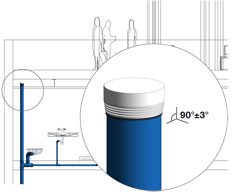 Architectural constraints or special weather conditions
Architectural constraints or special weather conditions
The aerator can be used to ensure waste system ventilation when it is not possible to get air directly from the roof, for example, in the case of:
- Roof terraces, rooftop pools or solariums and the presence of people;
- Roofs covered with high layers of snow in winter.
The solution in these cases is to install the aerator with membrane in the roof space or in a grid room where air is ensured (therefore the air valve cannot be walled), in order to facilitate the collecting of air from the air valve.
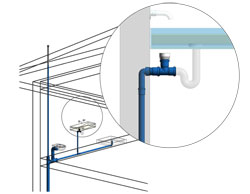 Insufficient or absent ventilation
Insufficient or absent ventilation
The air valve can be a very useful solution even in case of waste system malfunctioning caused by
- High distance between the waste stack and the most disadvantaged sanitary equipment;
- Insufficient diameter of horizontal pipes to ensure an adequate supply of air inside the waste system.
In order to prevent the formation of unpleasant bubbling or hissing noise in the pipes and bad smells in the bathroom, it is possible to intervene directly on single traps and on the main waste pipe, by putting one or more specific air valves (e.g. under a washbasin or a sink).
Air admittance valve: operation
The air valve is equipped with an inner membrane that opens when negative pressures (e.g. during the drainage of wastewater) are created in the waste system, allowing the air to enter the pipe in order to balance these pressures. Then the membrane closes, avoiding the emission of bad smells.
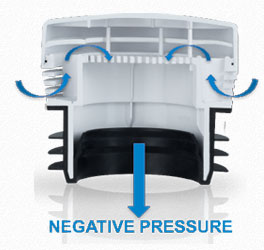
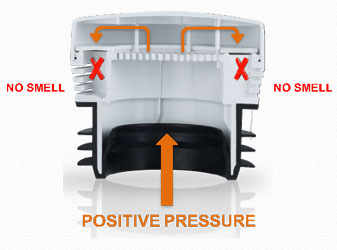
Air admittance valve: assembly
The air valve must be assembled in line with the column, so that the membrane can work in axis with the body of the valve (with a tolerance of ± 3 °); any horizontal installation is forbidden. The air admittance valve is placed inside a grid room or inside a false ceiling, where air is ensured. It is forbidden to lay the air admittance valve in rooms without air exchange (e.g. sealed in a niche).
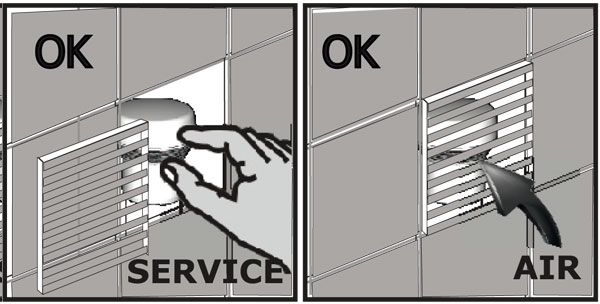
For more information, please contact Valsir by sending an email to This email address is being protected from spambots. You need JavaScript enabled to view it. . We will be happy to provide you with the right advice









